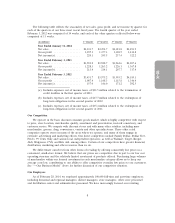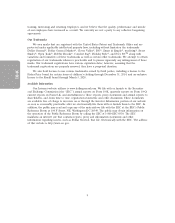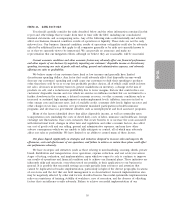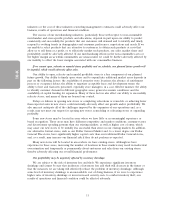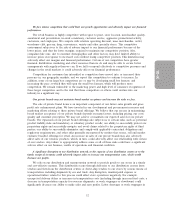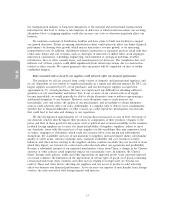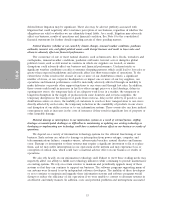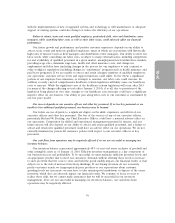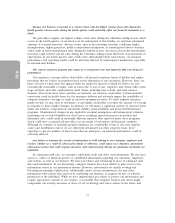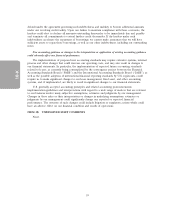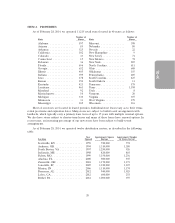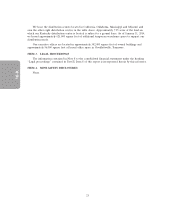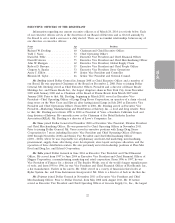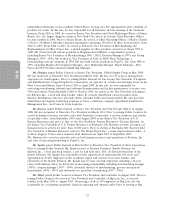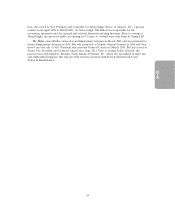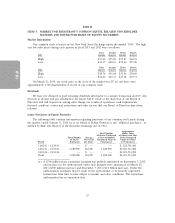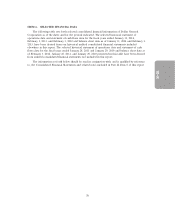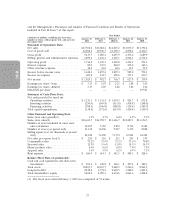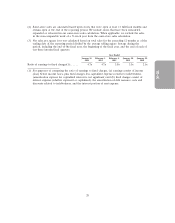Dollar General 2013 Annual Report Download - page 95
Download and view the complete annual report
Please find page 95 of the 2013 Dollar General annual report below. You can navigate through the pages in the report by either clicking on the pages listed below, or by using the keyword search tool below to find specific information within the annual report.
obtain the personal information of our customers, employees and vendors that we hold or our business
information. A security breach of any kind could expose us to risks of data loss, litigation, government
enforcement actions and costly response measures, and could seriously disrupt our operations. Any
resulting negative publicity could significantly harm our reputation which could cause us to lose market
share and have an adverse effect on our business and financial performance.
Deterioration in market conditions or changes in our credit profile could adversely affect our ability to
raise additional capital to fund our operations and limit our ability to pursue our growth strategy or other
opportunities or to react to changes in the economy or our industry.
We obtain and manage liquidity from the positive cash flow we generate from our operating
activities and our access to capital markets, including our credit facility. Changes in the credit and
capital markets, including market disruptions, limited liquidity and interest rate fluctuations, may
increase the cost of financing, make it more difficult to obtain favorable terms, or restrict our access to
this source of future liquidity. There is no assurance that our ability to obtain additional financing
through the capital markets will not be adversely impacted by economic conditions. Our debt securities
currently have an investment grade rating, and a downgrade of this rating likely would make it more
difficult or expensive for us to obtain additional financing and would increase the cost of borrowing
under our credit facility, which could adversely affect our cash flow and limit our growth strategy or
other opportunities or our ability to react to changes in the economy or our industry.
At January 31, 2014, we had total outstanding debt (including the current portion of long-term
obligations) of approximately $2.8 billion. We also had an additional $822.8 million available for
borrowing under our unsecured revolving credit facility. This level of debt could have important
negative consequences to our business, including:
• requiring a substantial portion of our cash flow from operations to be dedicated to the payment
of principal and interest on our indebtedness, therefore reducing our ability to use our cash flow
to fund our operations, capital expenditures and future business opportunities or repurchase
shares of our common stock;
• making it more difficult for us to raise additional capital to fund our operations and pursue our
growth strategy, including by limiting our ability to obtain additional financing for working
capital, capital expenditures and debt service requirements; and
• placing us at a disadvantage compared to our competitors who are less leveraged and may be
better able to use their cash flow to fund competitive responses to changing industry, market or
economic conditions.
Our debt agreements contain restrictions that could limit our flexibility in operating our business.
Our credit facilities and the indenture governing our notes contain various covenants that could
limit our ability to engage in specified types of transactions. These covenants limit our and our
subsidiaries’ ability to, among other things:
• incur indebtedness of subsidiaries;
• create certain liens or encumbrances;
• merge, consolidate, sell or otherwise dispose of all or substantially all of our assets; and
• make any material change in the nature of our business.
We are also subject to specified financial ratio covenants under our credit facilities. Our ability to
meet these financial ratios can be affected by events beyond our control, and we cannot assure you that
we will meet these ratios and other covenants. A breach of any of these covenants could result in a
18
10-K


